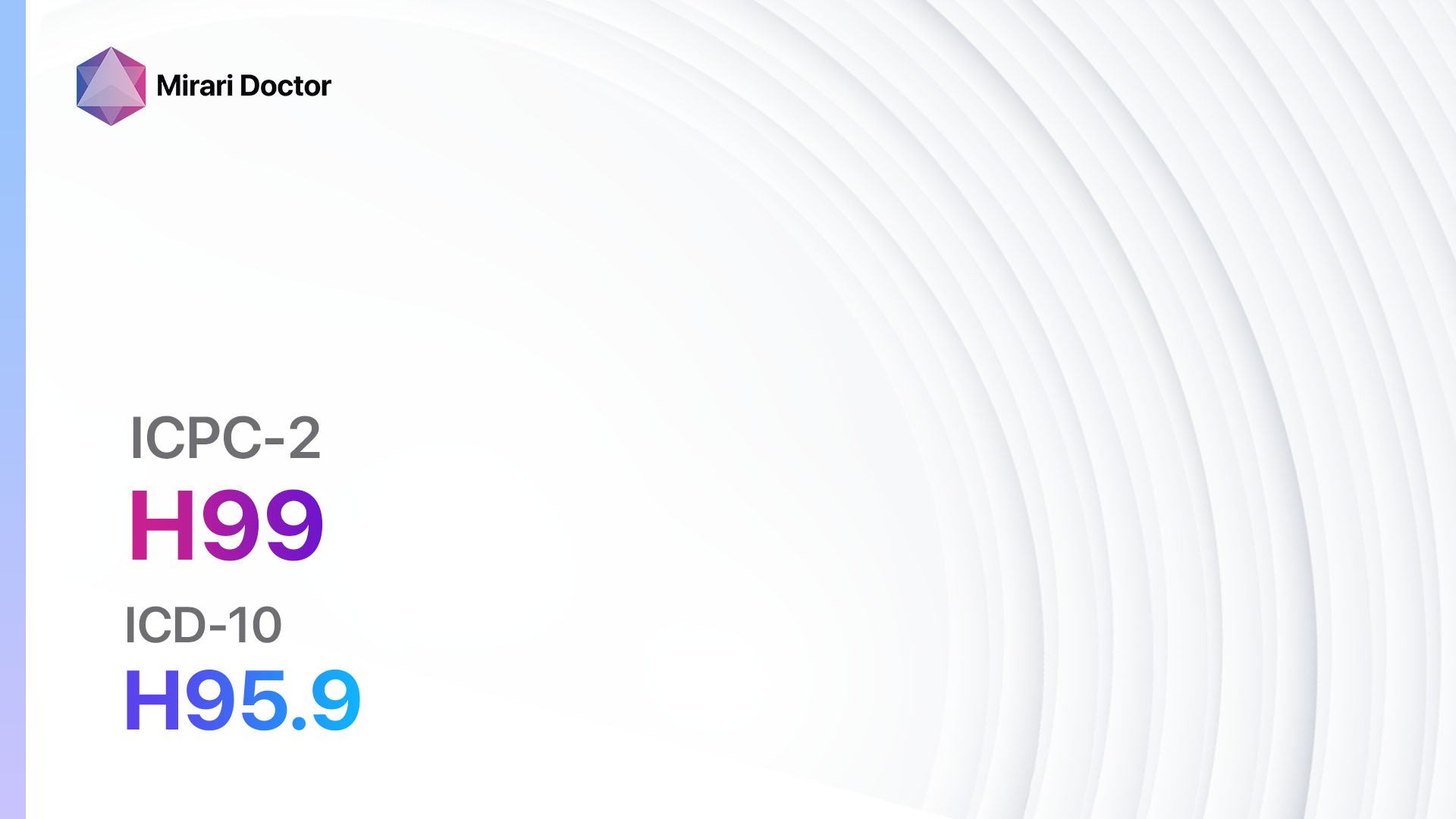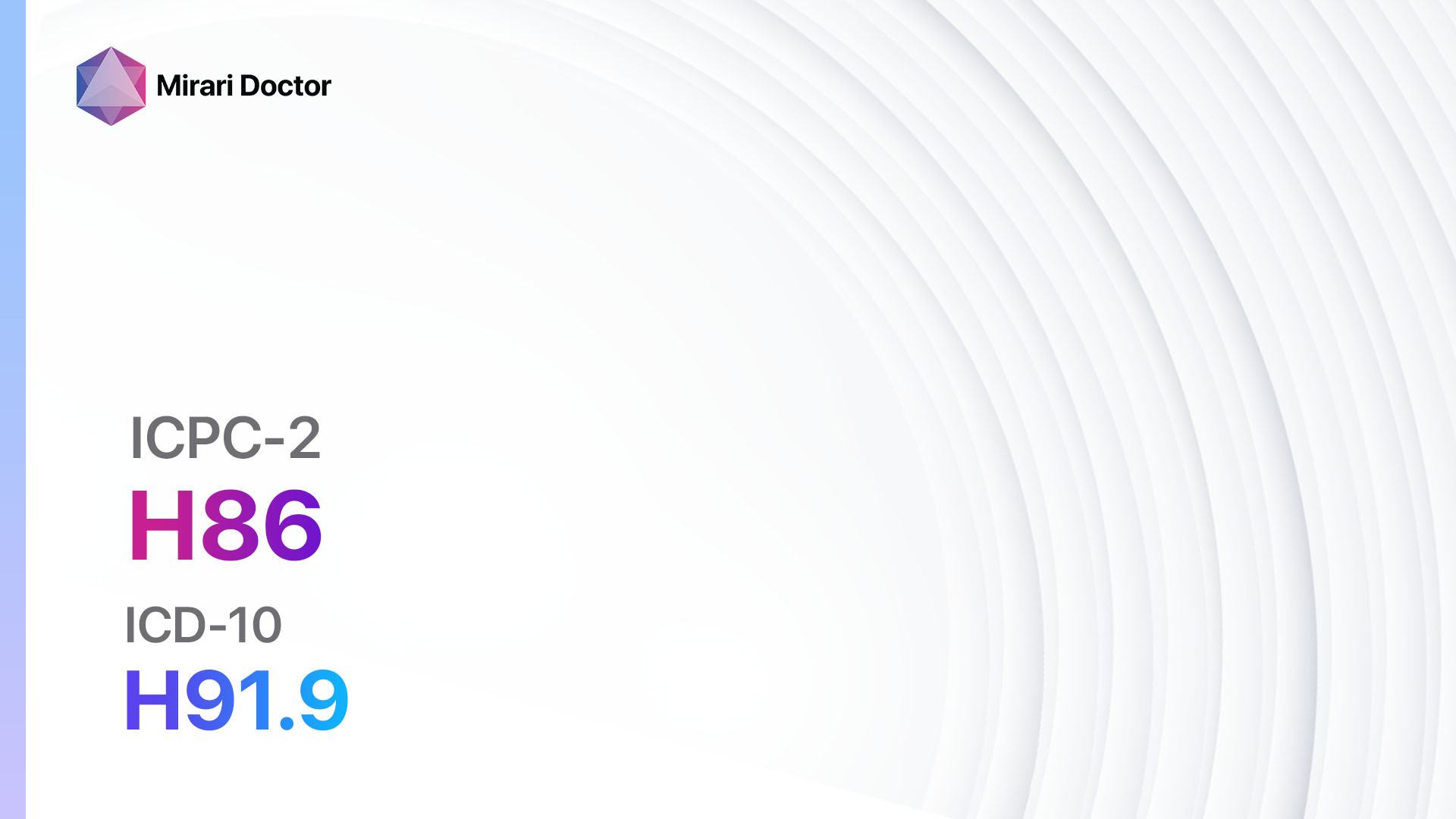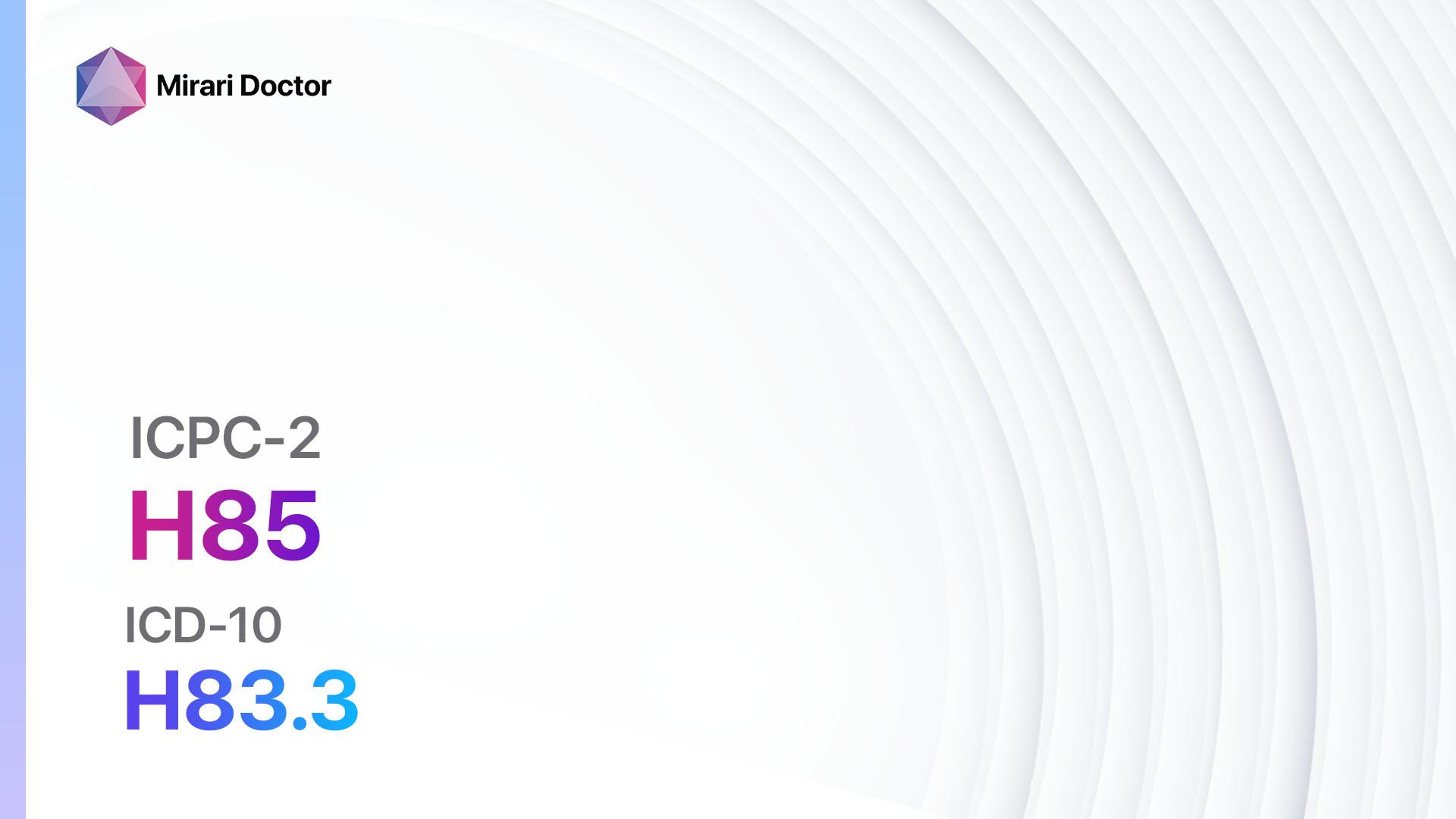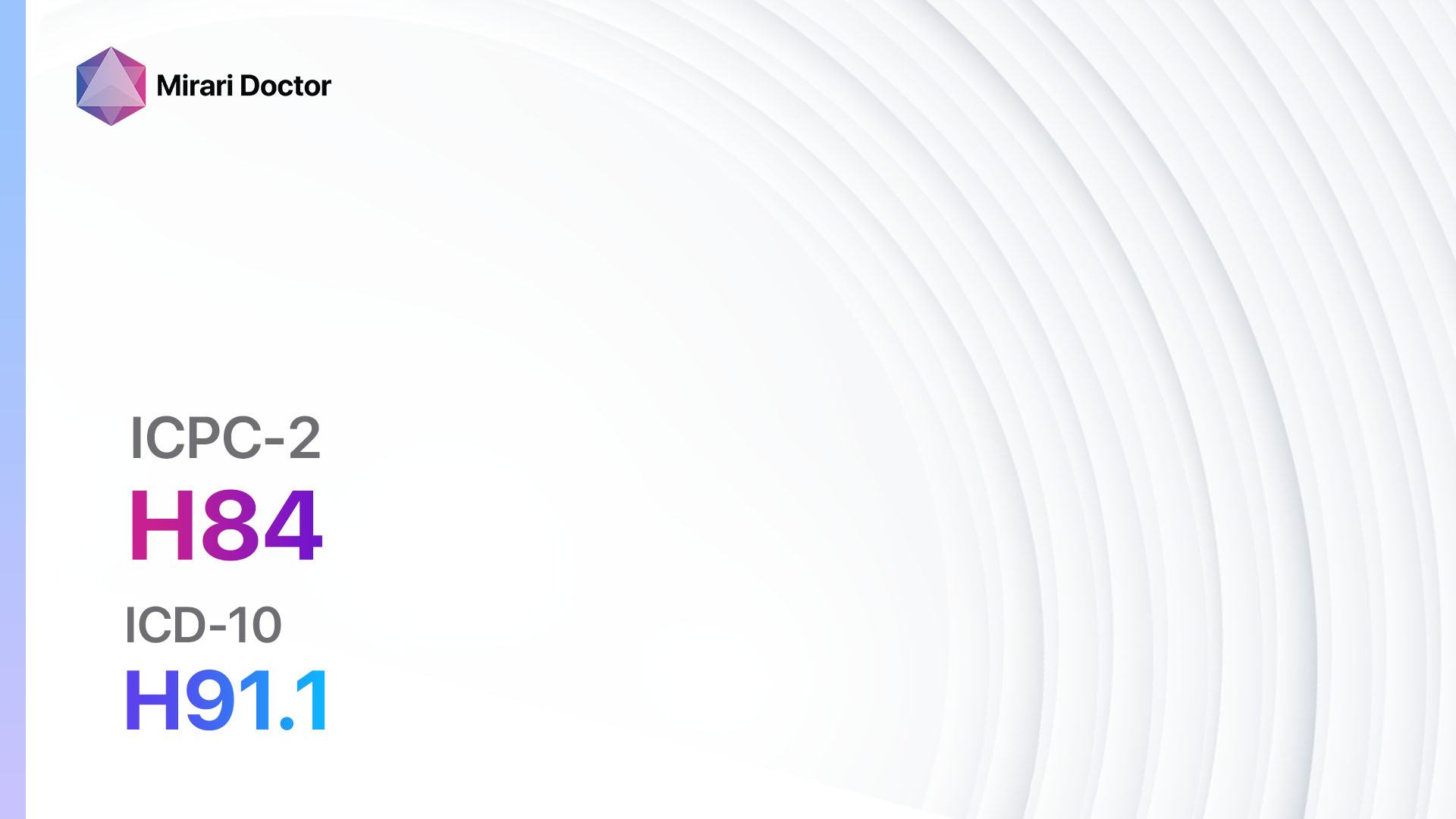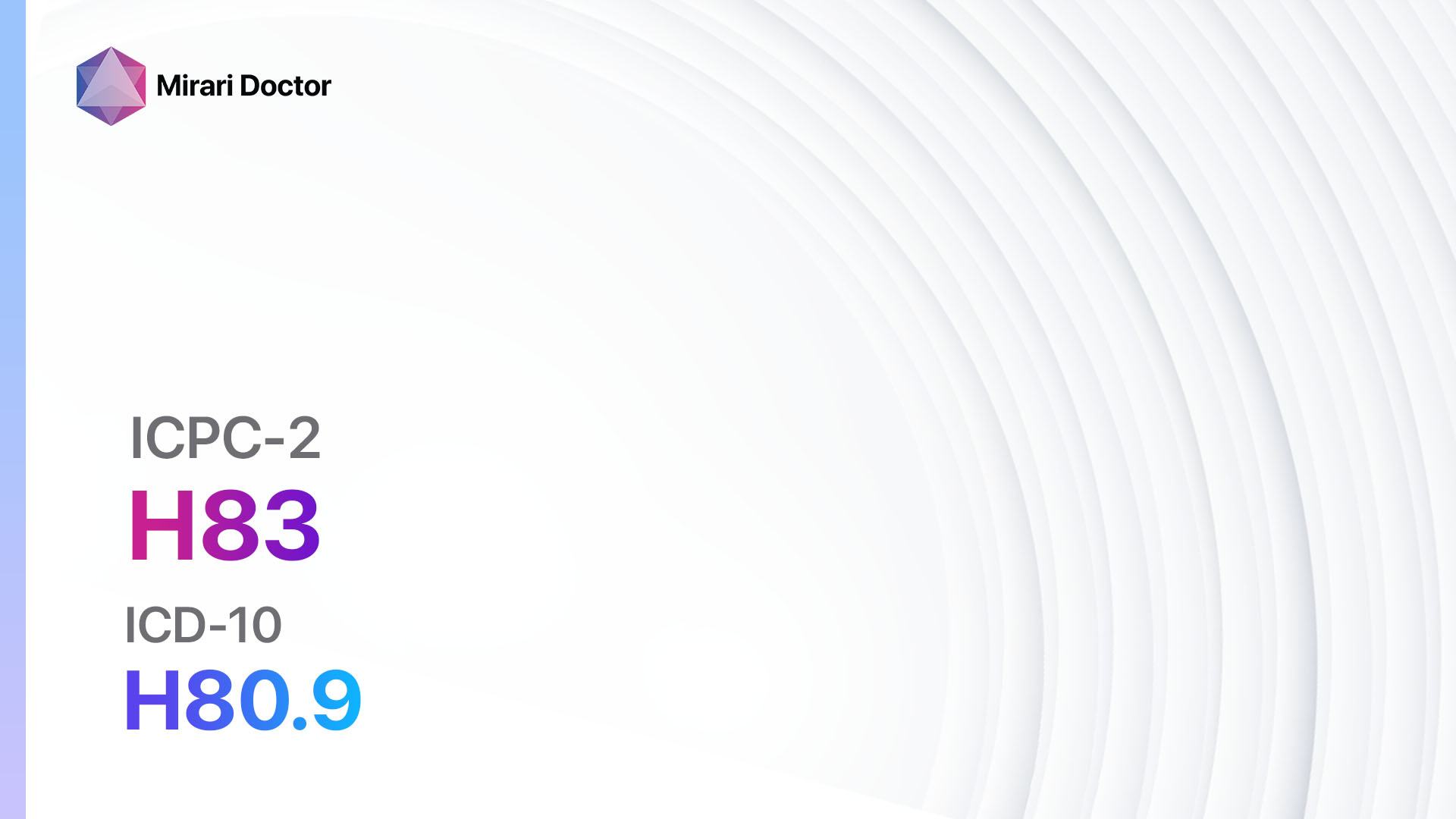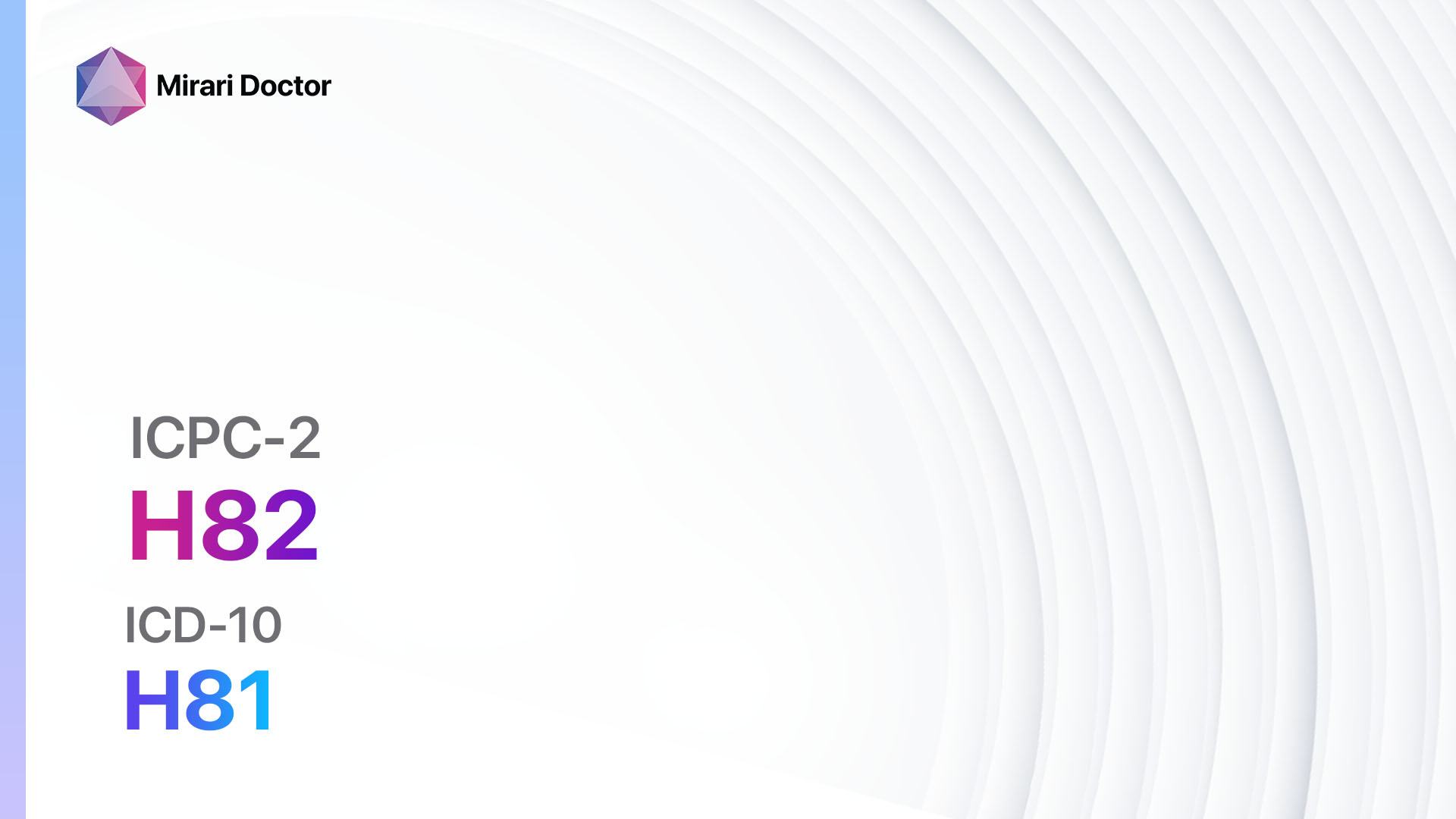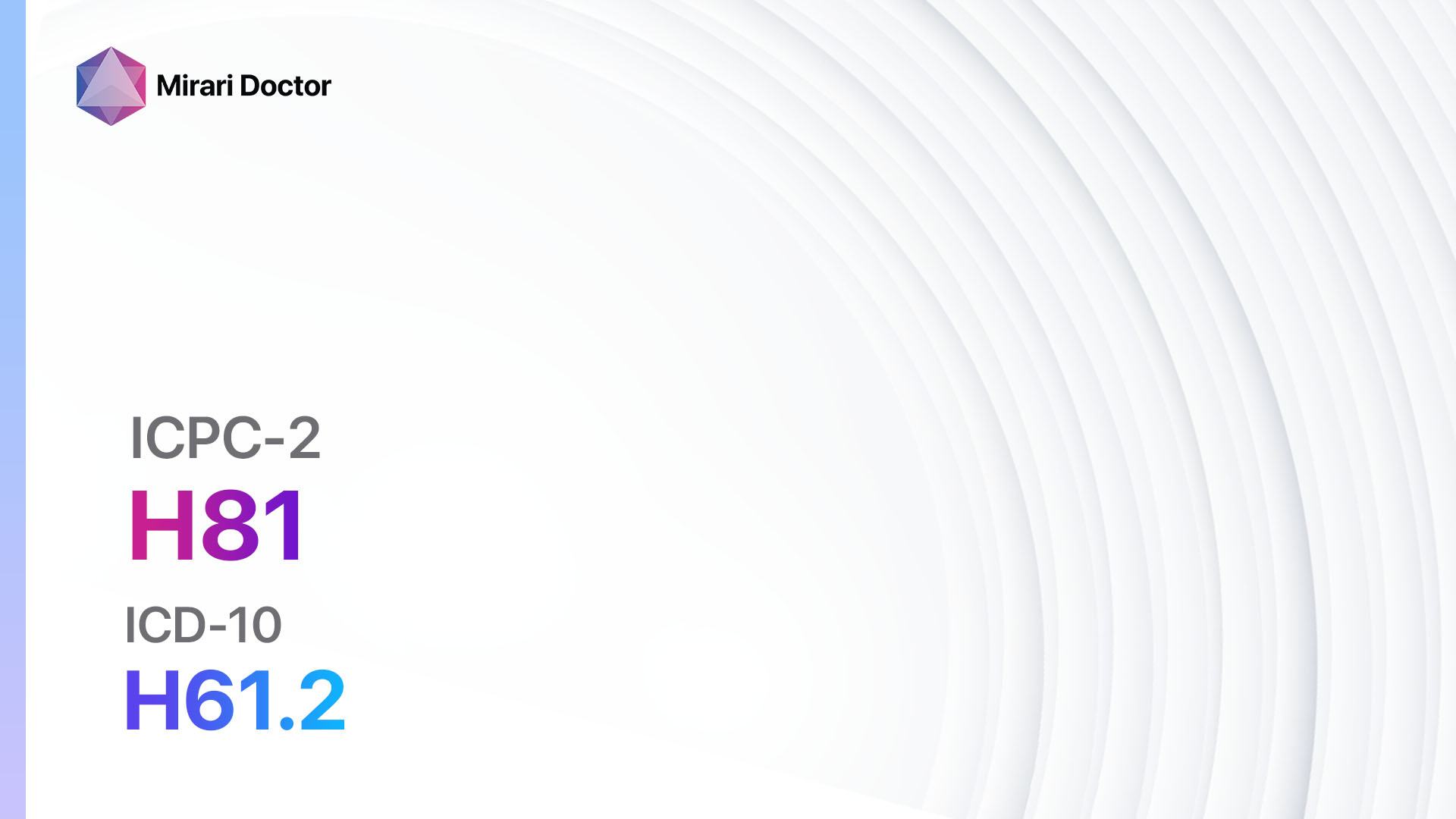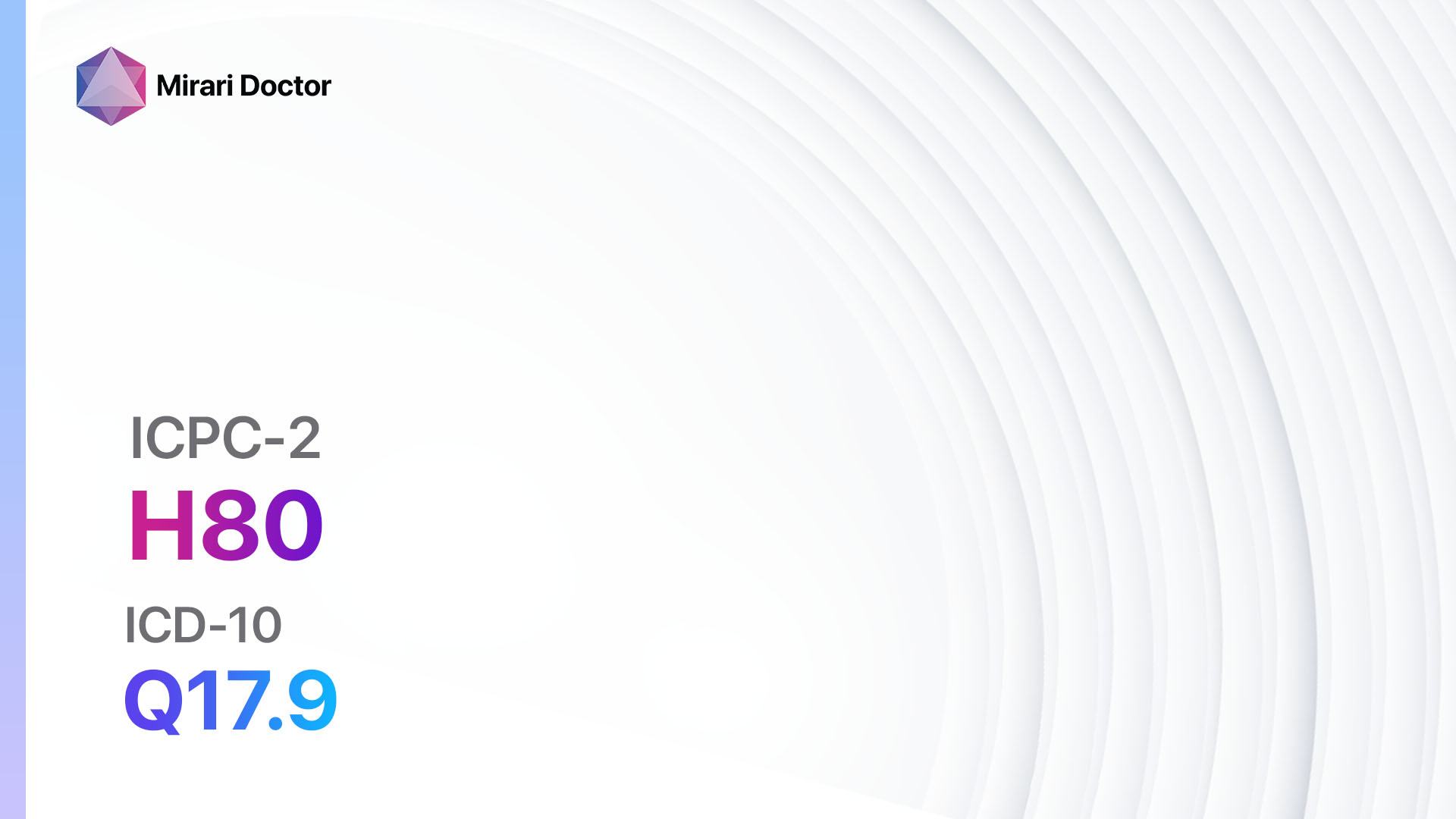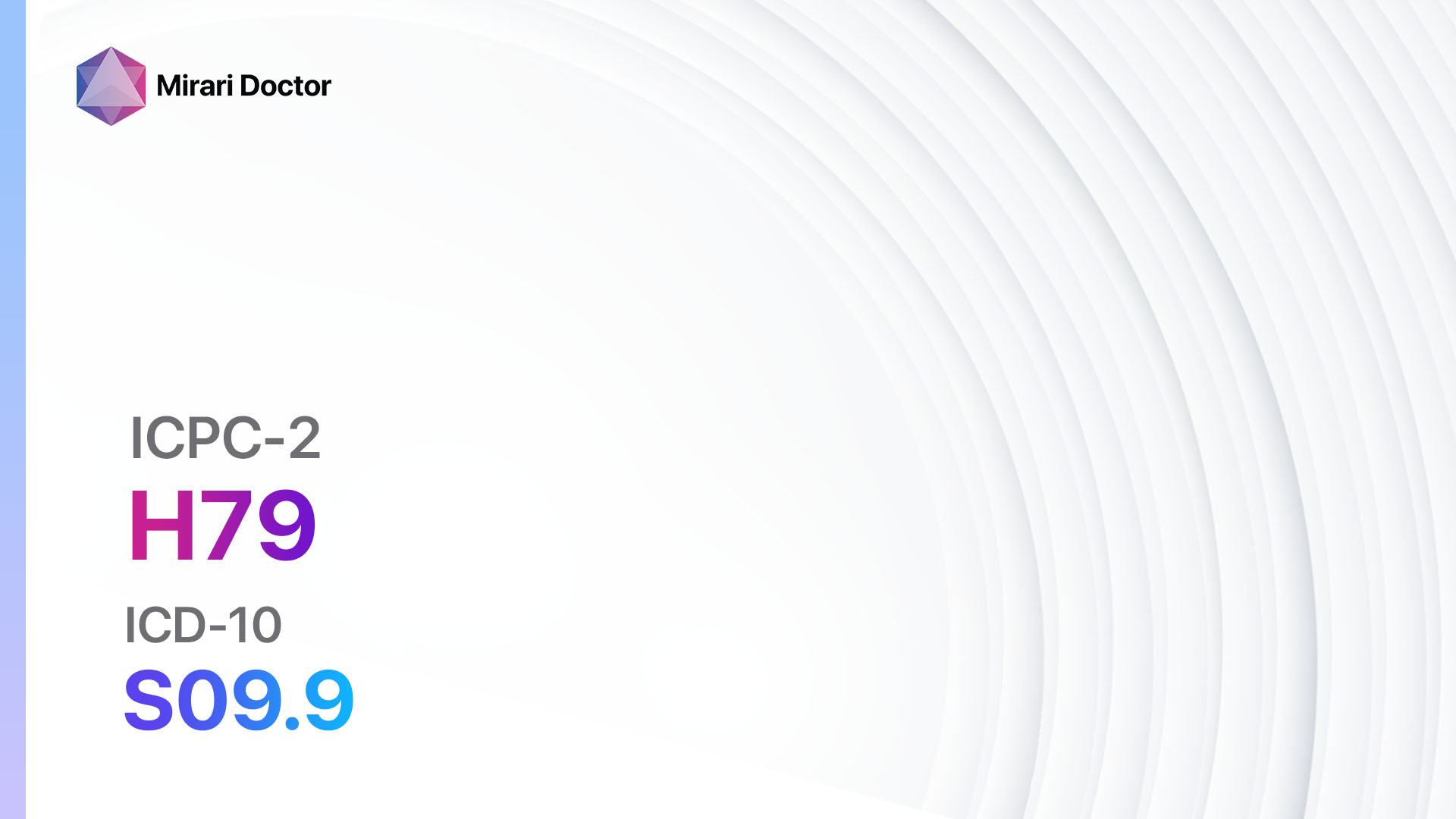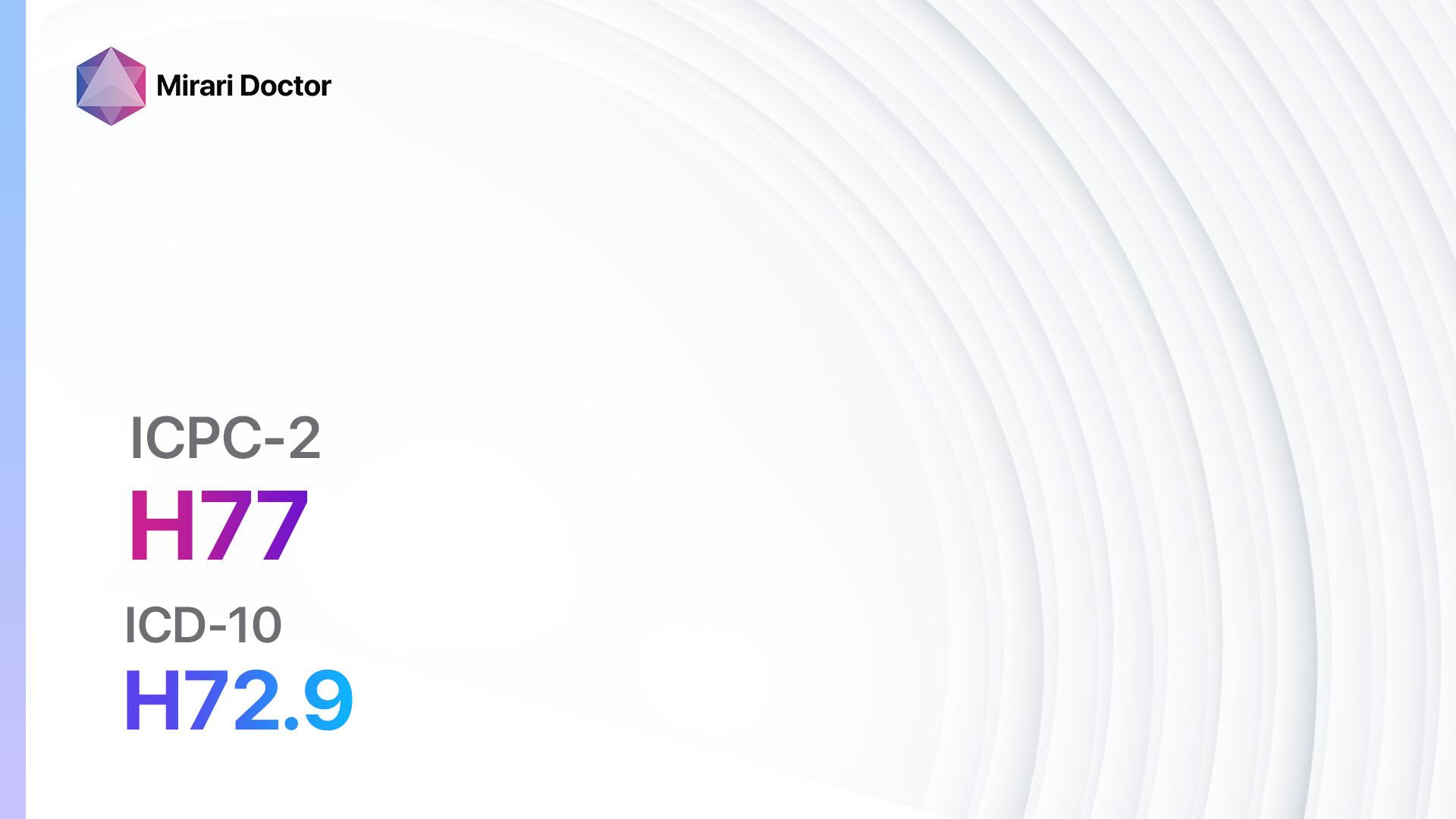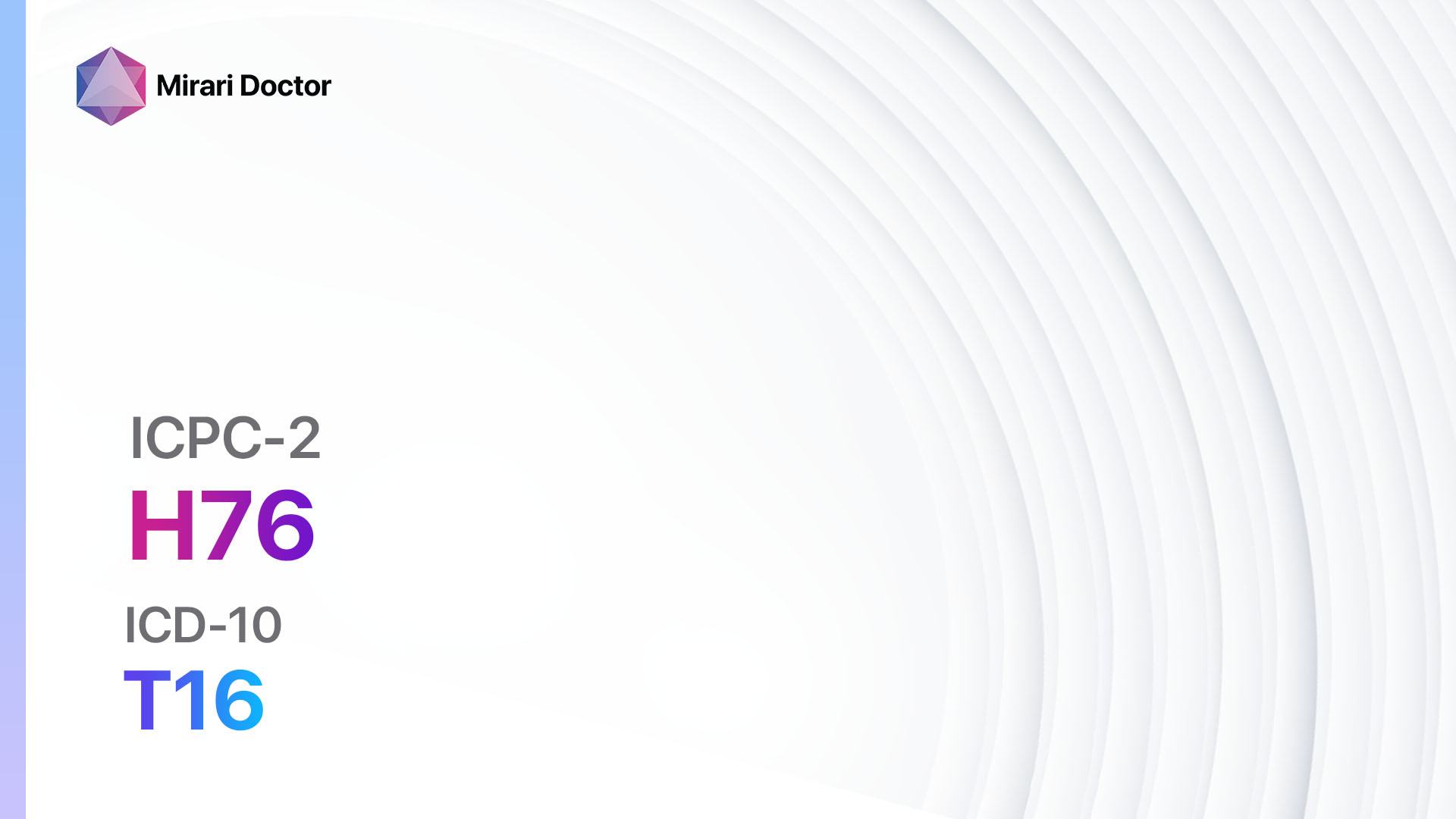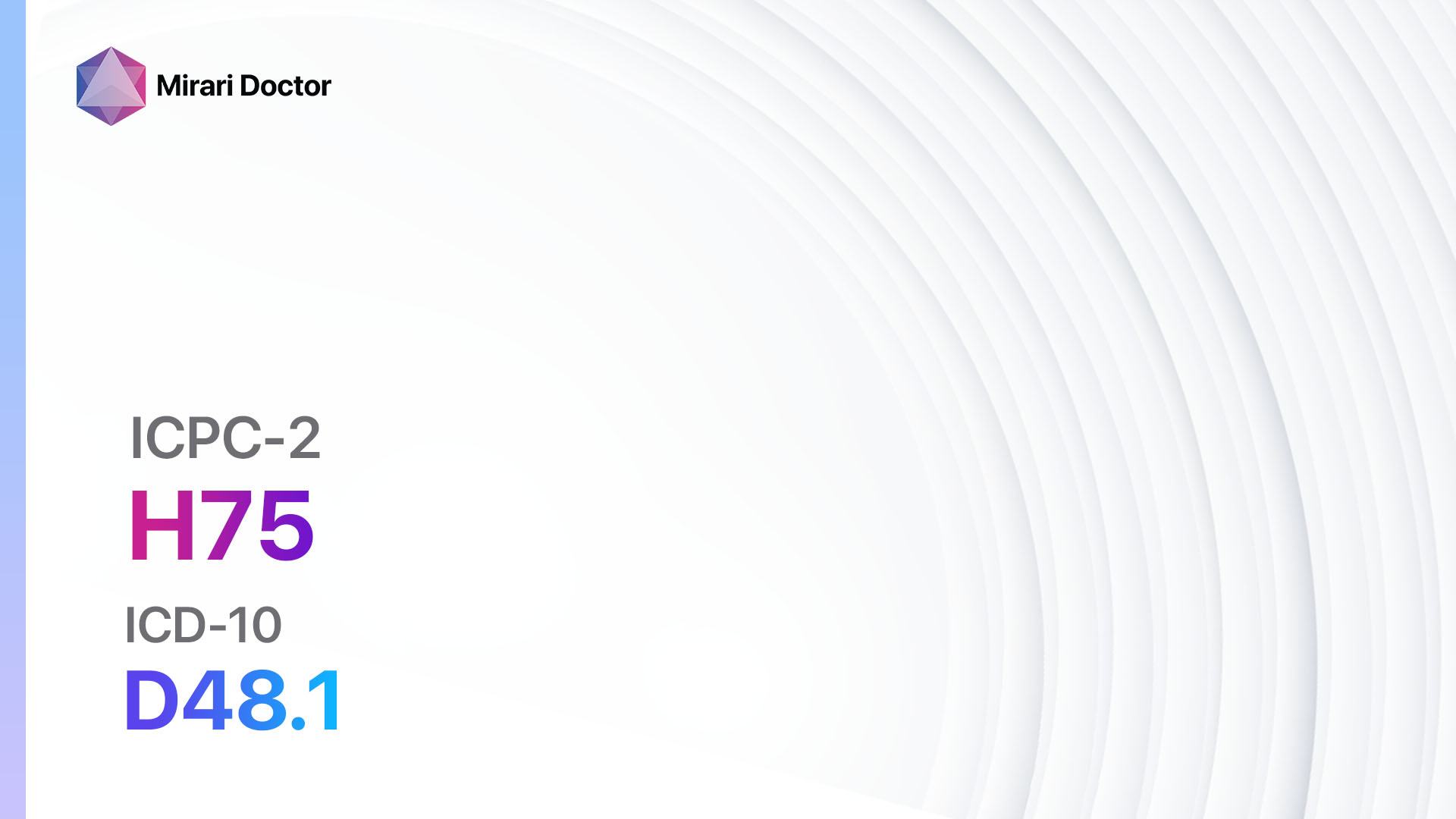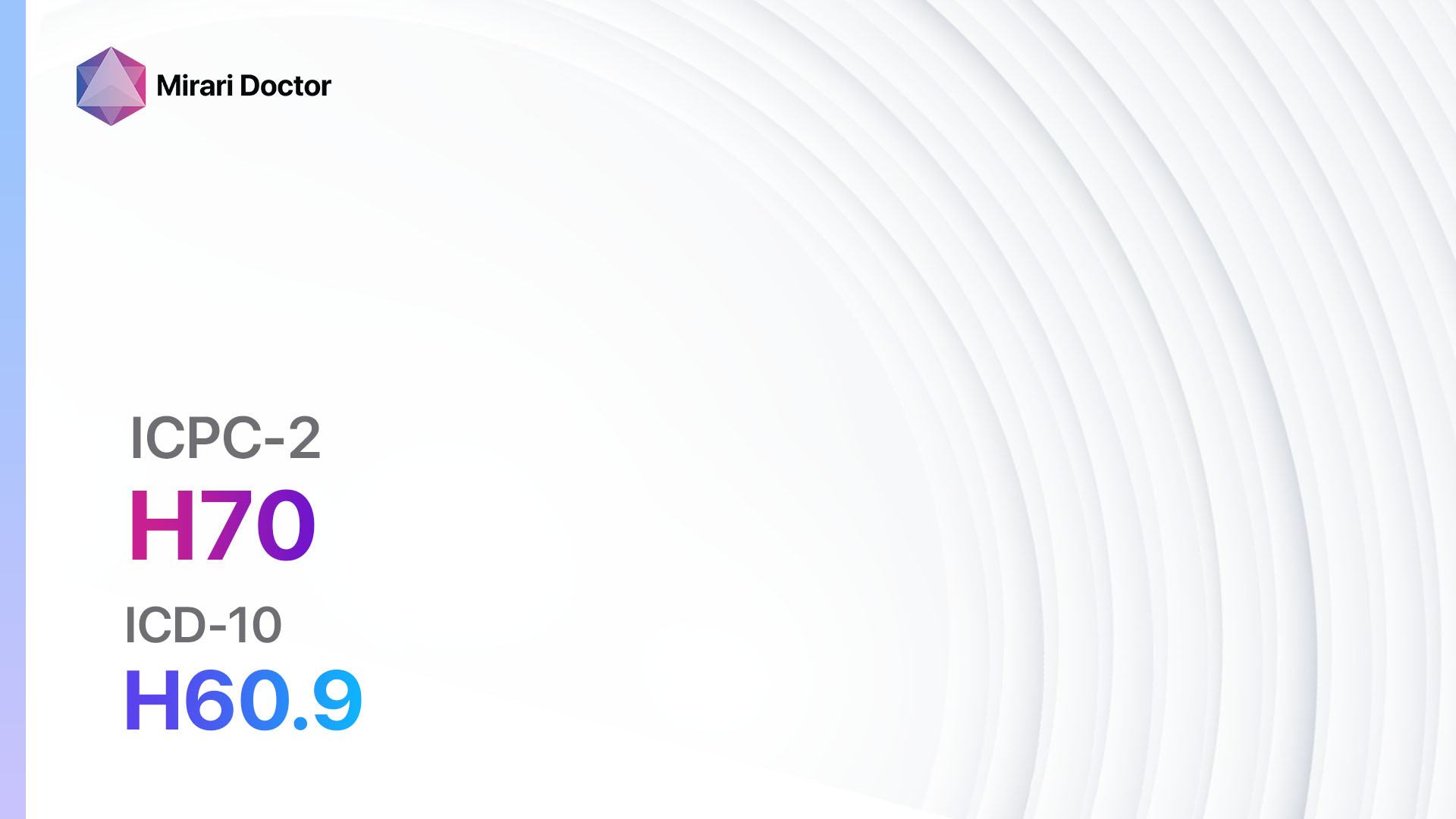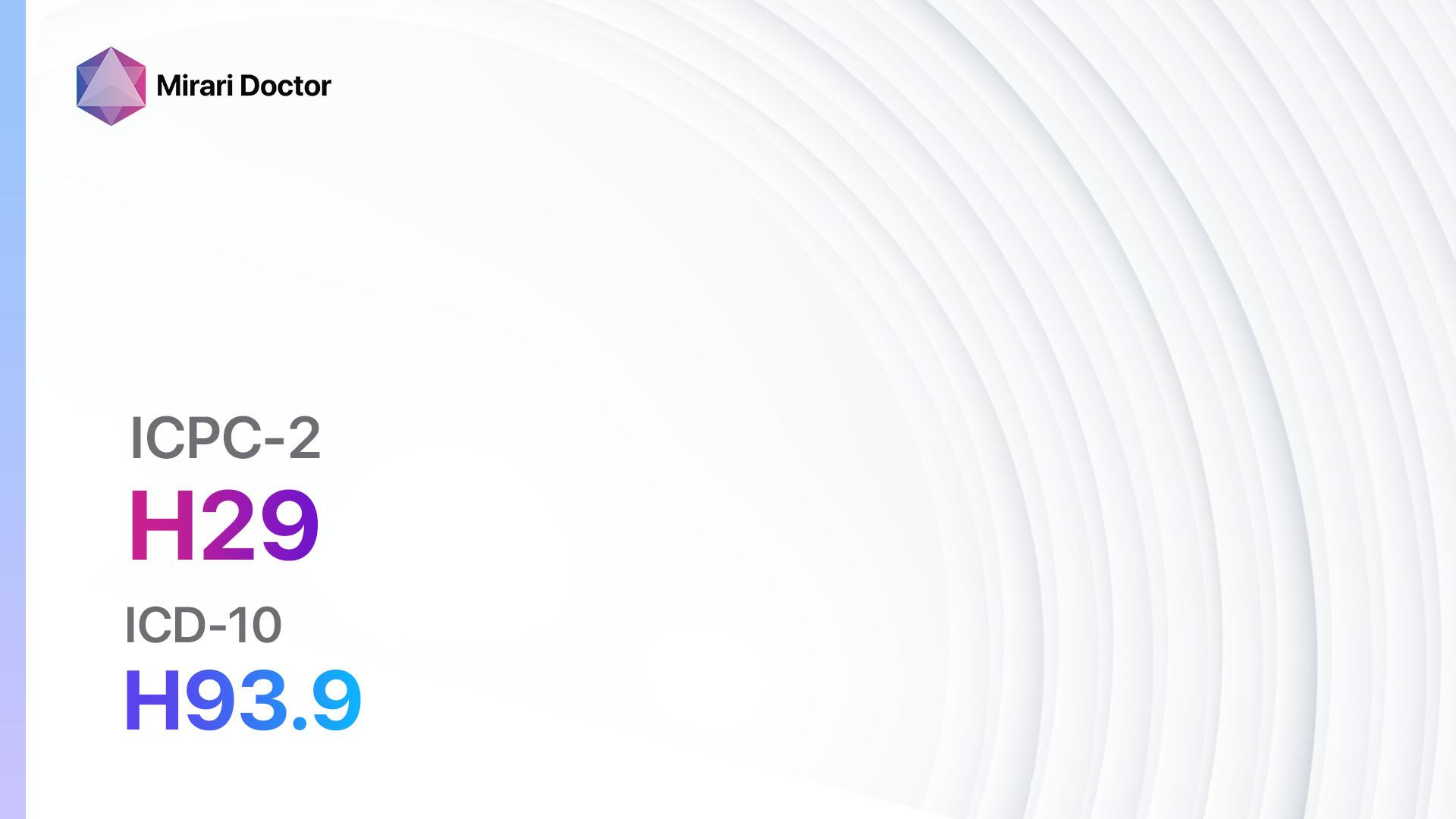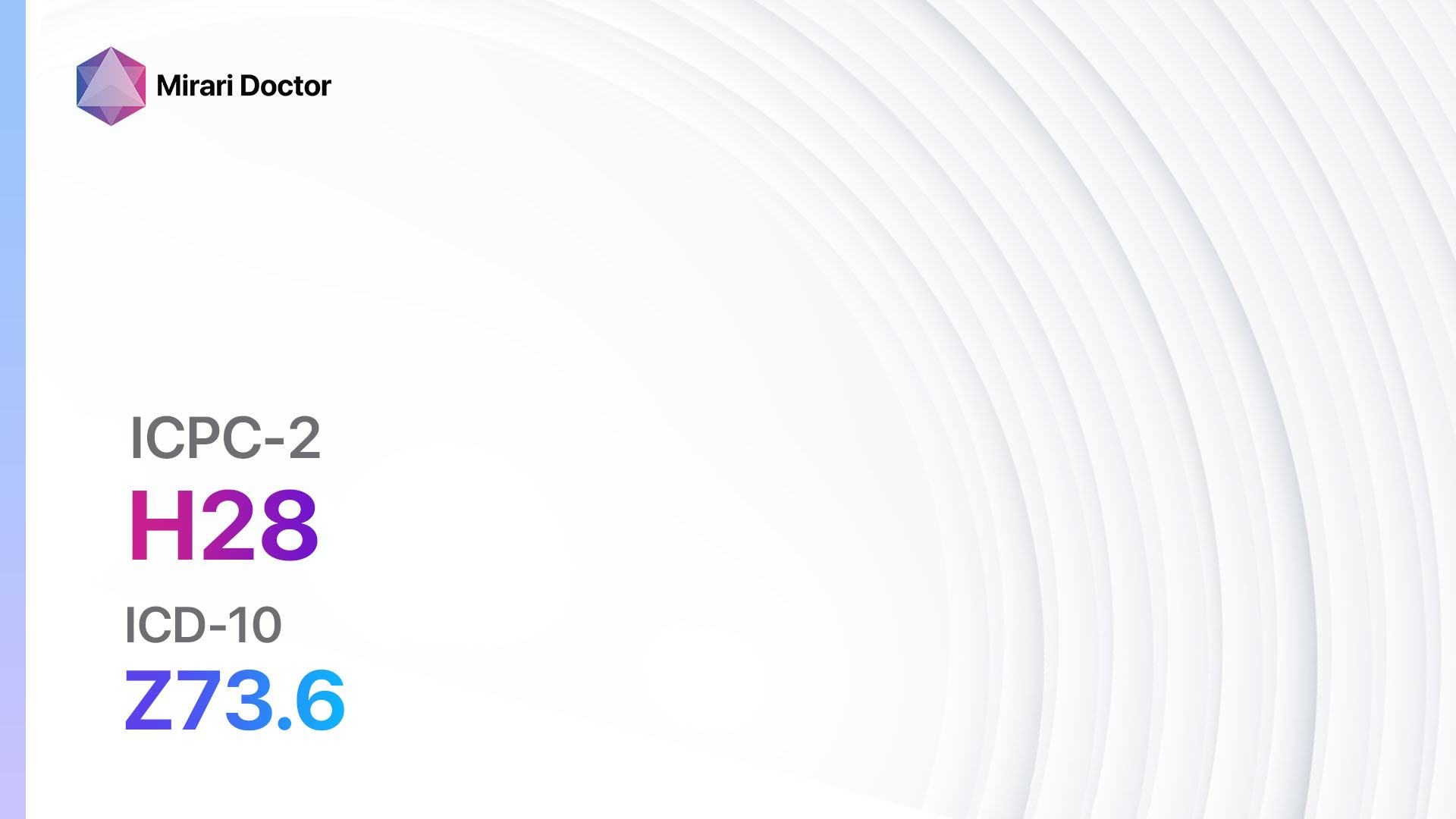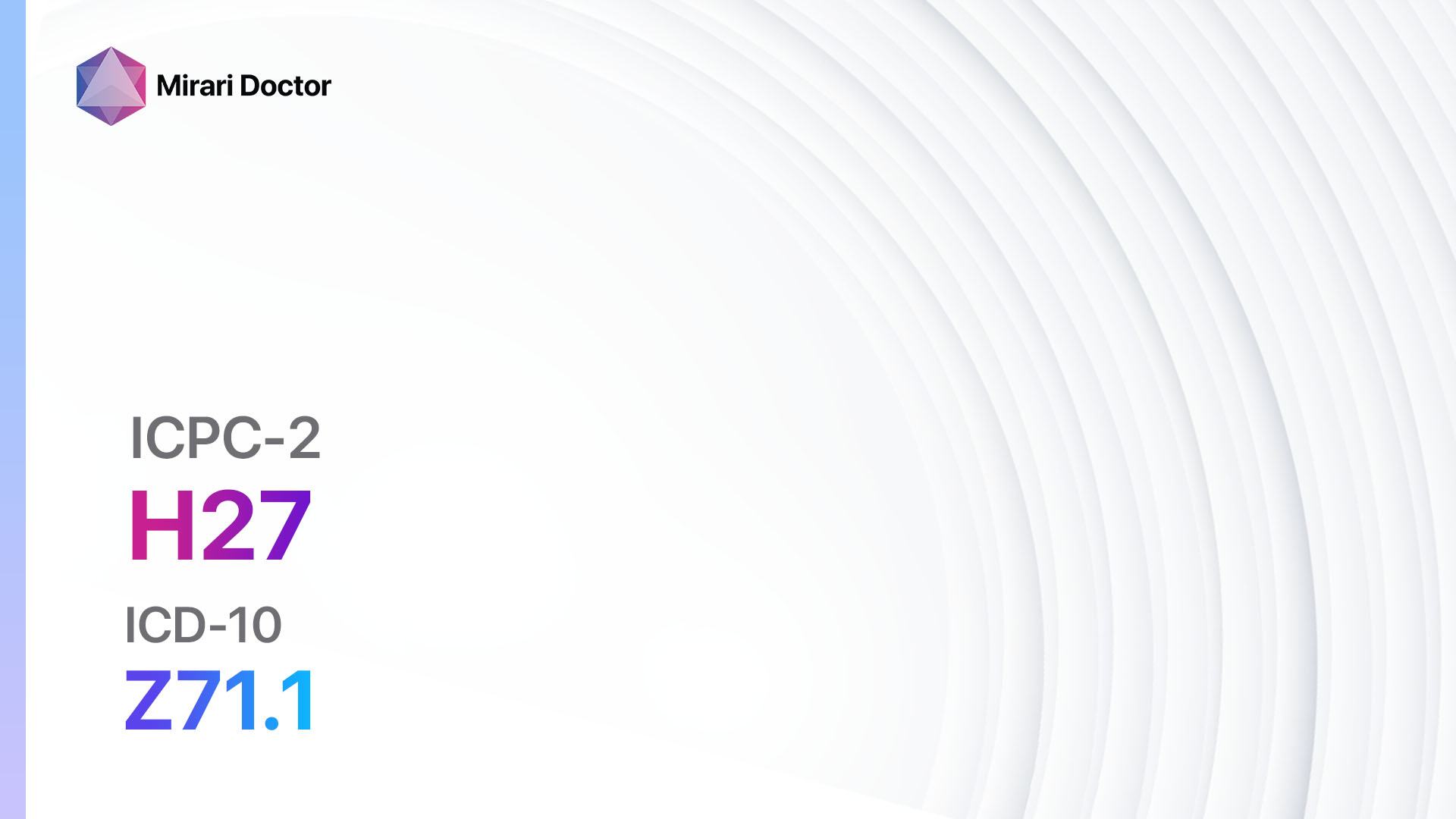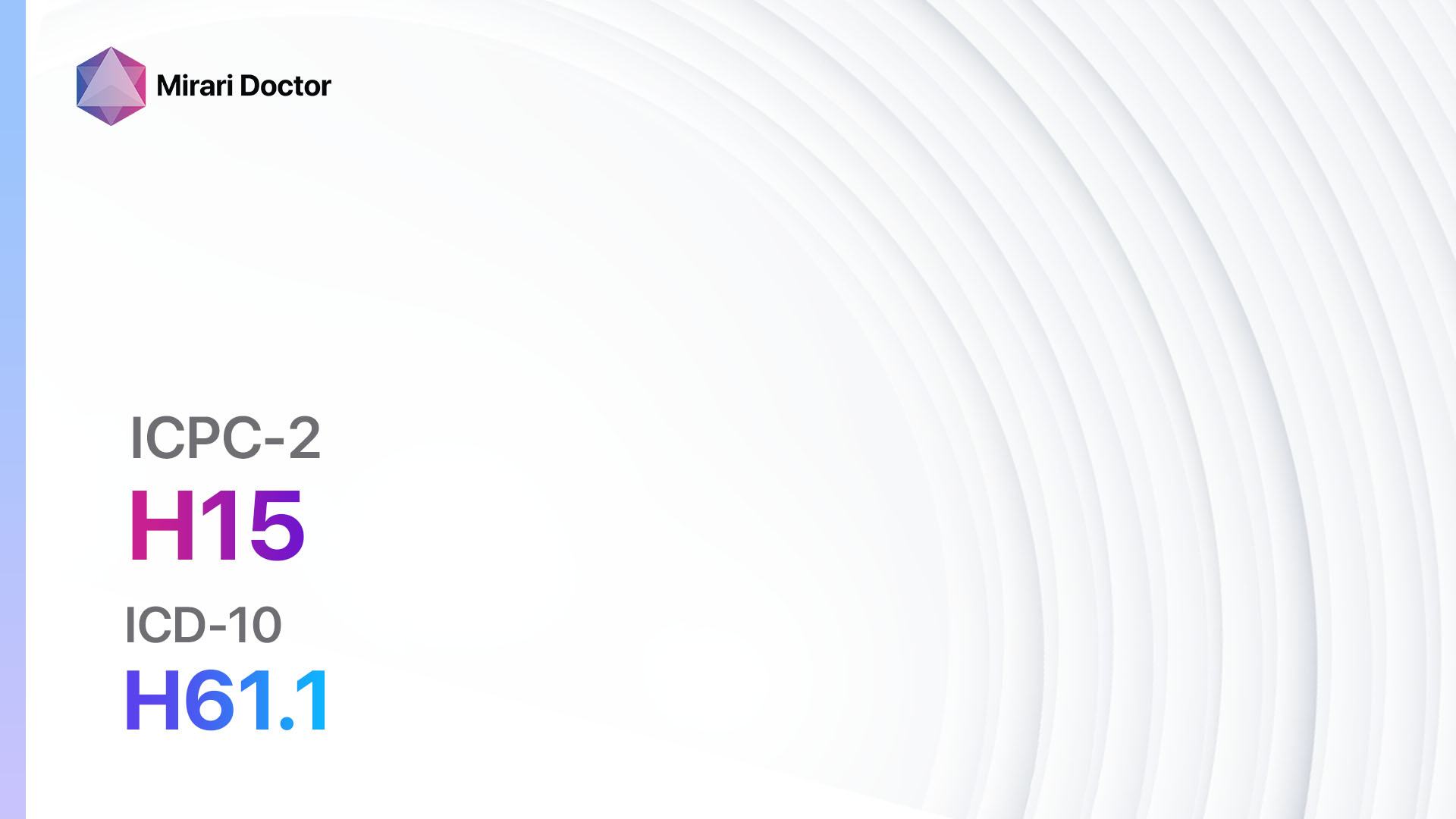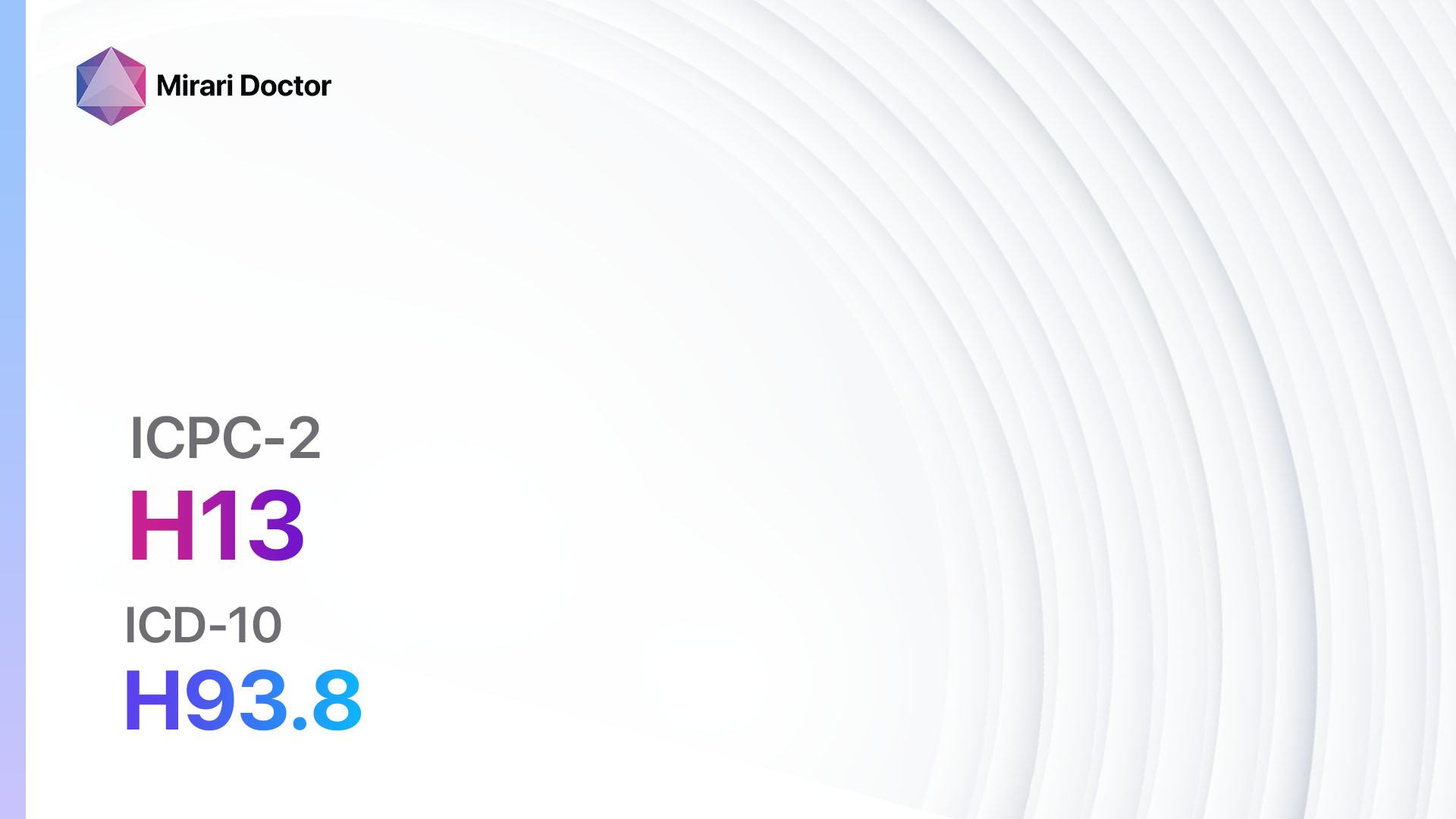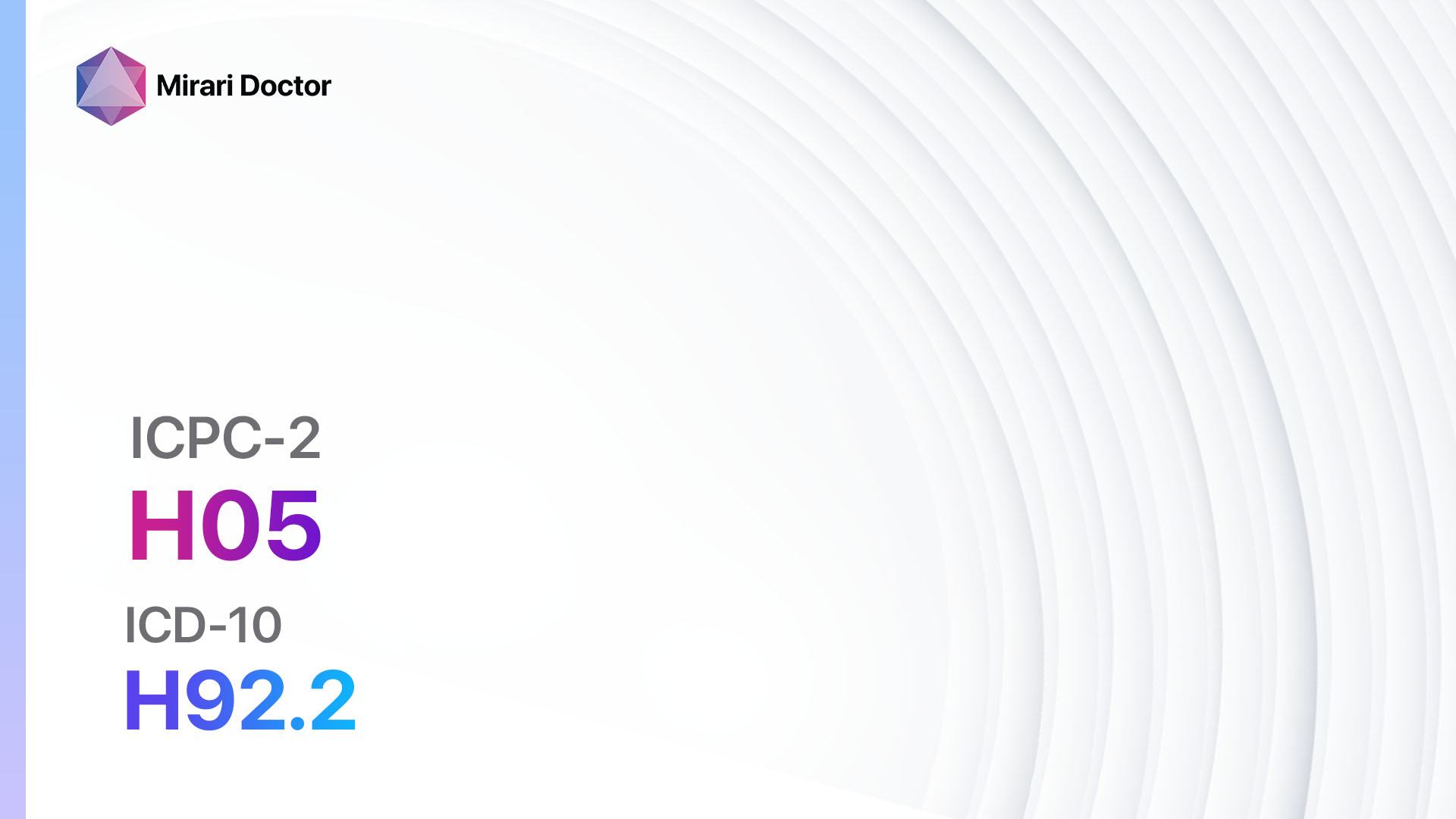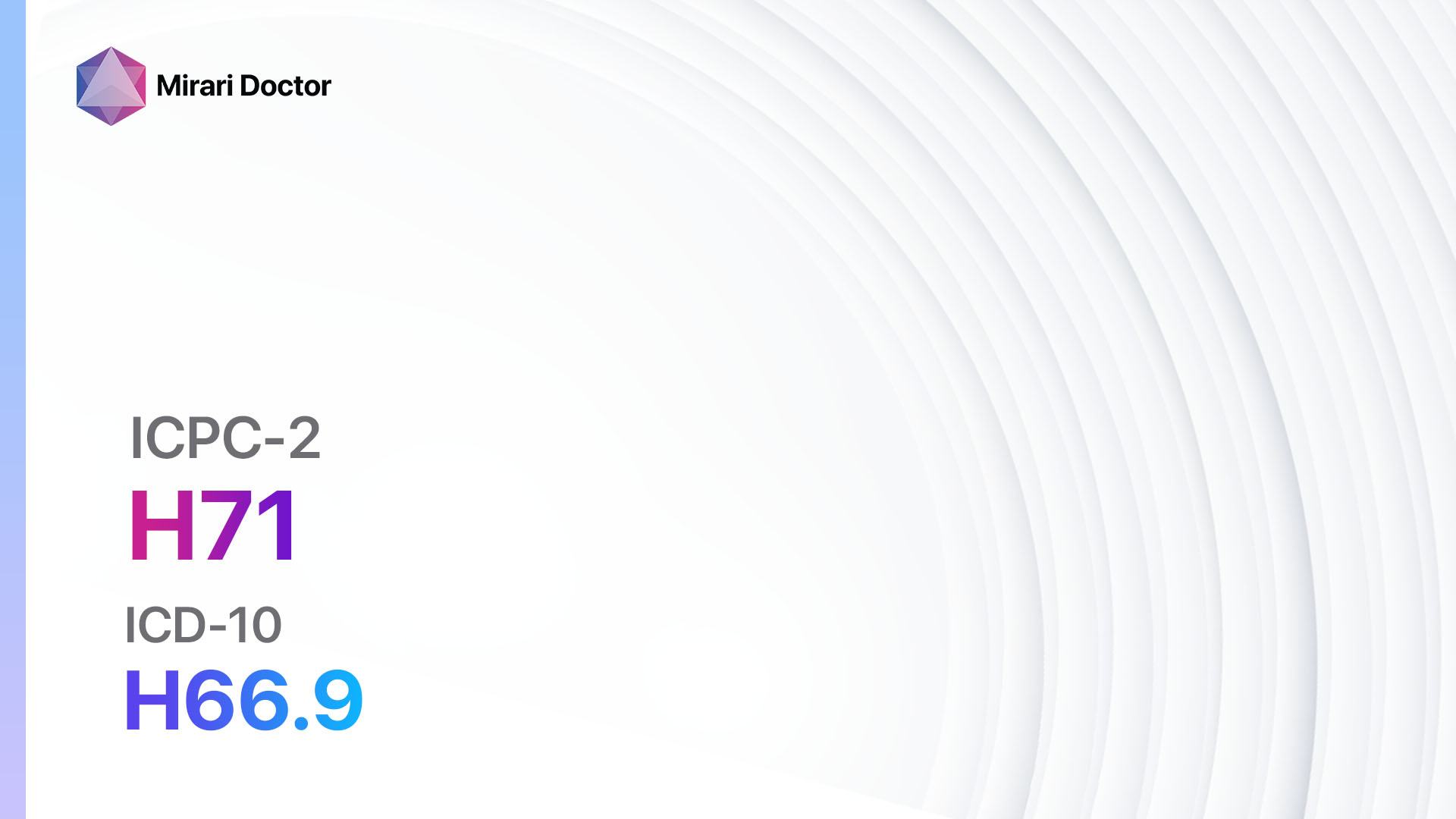
Introduction
Acute otitis media/myringitis is a common condition characterized by inflammation and infection of the middle ear. It is often associated with pain, fever, and hearing loss[1]. The aim of this guide is to provide healthcare professionals with a comprehensive overview of the diagnosis and management of acute otitis media/myringitis.
Codes
Symptoms
- Ear pain: Patients may experience severe pain in the affected ear, which can be worsened by chewing or swallowing[4].
- Fever: A low-grade fever is commonly observed in patients with acute otitis media/myringitis[5].
- Hearing loss: Patients may experience temporary hearing loss or muffled hearing in the affected ear[6].
- Ear drainage: In some cases, there may be discharge from the affected ear[7].
- Irritability: Infants and young children may exhibit increased irritability and difficulty sleeping[8].
Causes
- Bacterial infection: Acute otitis media/myringitis is often caused by bacterial infection, most commonly Streptococcus pneumoniae, Haemophilus influenzae, or Moraxella catarrhalis[9].
- Viral infection: In some cases, acute otitis media/myringitis may be caused by a viral infection, such as respiratory syncytial virus or influenza virus[10].
Diagnostic Steps
Medical History
- Obtain a detailed medical history, including information about previous ear infections, recent upper respiratory tract infections, and any underlying medical conditions.
- Ask about symptoms, such as ear pain, fever, hearing loss, and ear drainage.
- Inquire about any recent trauma to the ear or exposure to loud noises.
Physical Examination
- Perform a thorough physical examination, including inspection of the external ear, otoscopy, and assessment of the tympanic membrane.
- Look for signs of inflammation, such as redness or swelling of the external ear.
- Use an otoscope to examine the ear canal and tympanic membrane for signs of infection, such as erythema, bulging, or perforation.
- Assess the mobility of the tympanic membrane using pneumatic otoscopy.
Laboratory Tests
- No specific laboratory tests are required for the diagnosis of acute otitis media/myringitis.
- However, in cases of recurrent or persistent infections, a culture of the ear discharge may be obtained to identify the causative organism and guide antibiotic therapy.
Diagnostic Imaging
- Diagnostic imaging is generally not necessary for the diagnosis of acute otitis media/myringitis.
- However, in cases of severe or complicated infections, a computed tomography (CT) scan of the temporal bone may be performed to assess the extent of the infection or identify any complications, such as mastoiditis or intracranial involvement.
Other Tests
- In some cases, a tympanometry may be performed to assess the middle ear function and determine the presence of fluid behind the tympanic membrane.
- Audiometry may be considered in patients with persistent or recurrent infections to assess the extent of hearing loss.
Follow-up and Patient Education
- Schedule a follow-up appointment to monitor the patient’s response to treatment and assess for any complications.
- Provide patient education regarding the importance of completing the full course of antibiotics, managing pain and fever, and seeking medical attention if symptoms worsen or do not improve.
Possible Interventions
Traditional Interventions
Medications:
Top 5 drugs for Acute otitis media/myringitis:
- Amoxicillin:
- Cost: Generic versions can be $3-$20 for a 10-day course.
- Contraindications: Hypersensitivity to penicillins or cephalosporins.
- Side effects: Diarrhea, rash, nausea.
- Severe side effects: Severe allergic reactions, Stevens-Johnson syndrome.
- Drug interactions: None of clinical significance.
- Warning: Complete the full course of antibiotics as prescribed.
- Amoxicillin/clavulanate:
- Cost: Generic versions can be $10-$30 for a 10-day course.
- Contraindications: Hypersensitivity to penicillins or cephalosporins, history of cholestatic jaundice or hepatic dysfunction.
- Side effects: Diarrhea, rash, nausea.
- Severe side effects: Severe allergic reactions, Stevens-Johnson syndrome.
- Drug interactions: None of clinical significance.
- Warning: Complete the full course of antibiotics as prescribed.
- Cefuroxime:
- Cost: Generic versions can be $10-$30 for a 10-day course.
- Contraindications: Hypersensitivity to cephalosporins.
- Side effects: Diarrhea, rash, nausea.
- Severe side effects: Severe allergic reactions, Stevens-Johnson syndrome.
- Drug interactions: None of clinical significance.
- Warning: Complete the full course of antibiotics as prescribed.
- Azithromycin:
- Cost: Generic versions can be $10-$30 for a 5-day course.
- Contraindications: Hypersensitivity to macrolides.
- Side effects: Diarrhea, nausea, abdominal pain.
- Severe side effects: Severe allergic reactions, hepatotoxicity.
- Drug interactions: None of clinical significance.
- Warning: Complete the full course of antibiotics as prescribed.
- Ciprofloxacin (for patients with penicillin allergy):
- Cost: Generic versions can be $10-$30 for a 7-day course.
- Contraindications: Hypersensitivity to fluoroquinolones, history of tendon disorders.
- Side effects: Diarrhea, nausea, headache.
- Severe side effects: Tendon rupture, severe allergic reactions.
- Drug interactions: None of clinical significance.
- Warning: Complete the full course of antibiotics as prescribed.
Alternative Drugs:
- Trimethoprim/sulfamethoxazole: An alternative for patients with penicillin allergy.
- Clindamycin: An alternative for patients with penicillin allergy.
- Ceftriaxone: Reserved for severe cases or treatment failures.
- Levofloxacin: Reserved for severe cases or treatment failures.
- Moxifloxacin: Reserved for severe cases or treatment failures.
Surgical Procedures:
- Surgical intervention is generally not required for the treatment of acute otitis media/myringitis.
- However, in cases of complications, such as mastoiditis or intracranial involvement, surgical drainage or other procedures may be necessary.
Alternative Interventions
- Warm compress: Applying a warm compress to the affected ear may help relieve pain and inflammation. Cost: $5-$10 for a reusable warm compress.
- Herbal remedies: Some herbal remedies, such as garlic oil or mullein oil, may have antimicrobial and anti-inflammatory properties. Cost: Varies depending on the specific product.
- Homeopathic remedies: Homeopathic remedies, such as Pulsatilla or Belladonna, may be used to alleviate symptoms. Cost: Varies depending on the specific product.
- Ear drops: Over-the-counter ear drops containing benzocaine or hydrocortisone may provide temporary relief from pain and inflammation. Cost: $5-$15 per bottle.
- Probiotics: Probiotic supplements may help support immune function and reduce the risk of recurrent infections. Cost: $10-$30 for a month’s supply.
Lifestyle Interventions
- Avoiding exposure to cigarette smoke or other irritants that can worsen symptoms.
- Encouraging adequate rest and hydration to support the body’s immune response.
- Promoting good hand hygiene to reduce the risk of spreading infection.
- Avoiding swimming or submerging the affected ear in water until the infection has resolved.
- Using ear protection, such as earplugs or earmuffs, in noisy environments to prevent further damage to the ear.
It is important to note that the cost ranges provided are approximate and may vary depending on the location and availability of the interventions.
Mirari Cold Plasma Alternative Intervention
Understanding Mirari Cold Plasma
- Safe and Non-Invasive Treatment: Mirari Cold Plasma is a safe and non-invasive treatment option for various skin conditions. It does not require incisions, minimizing the risk of scarring, bleeding, or tissue damage.
- Efficient Extraction of Foreign Bodies: Mirari Cold Plasma facilitates the removal of foreign bodies from the skin by degrading and dissociating organic matter, allowing easier access and extraction.
- Pain Reduction and Comfort: Mirari Cold Plasma has a local analgesic effect, providing pain relief during the treatment, making it more comfortable for the patient.
- Reduced Risk of Infection: Mirari Cold Plasma has antimicrobial properties, effectively killing bacteria and reducing the risk of infection.
- Accelerated Healing and Minimal Scarring: Mirari Cold Plasma stimulates wound healing and tissue regeneration, reducing healing time and minimizing the formation of scars.
Mirari Cold Plasma Prescription
Video instructions for using Mirari Cold Plasma Device – H71 Acute otitis media/myringitis (ICD-10:H66.9)
| Mild | Moderate | Severe |
| Mode setting: 1 (Infection) Location: 0 (Localized) Morning: 15 minutes, Evening: 15 minutes |
Mode setting: 1 (Infection) Location: 0 (Localized) Morning: 30 minutes, Lunch: 30 minutes, Evening: 30 minutes |
Mode setting: 1 (Infection) Location: 0 (Localized) Morning: 30 minutes, Lunch: 30 minutes, Evening: 30 minutes |
| Mode setting: 2 (Wound Healing) Location: 0 (Localized) Morning: 15 minutes, Evening: 15 minutes |
Mode setting: 2 (Wound Healing) Location: 0 (Localized) Morning: 30 minutes, Lunch: 30 minutes, Evening: 30 minutes |
Mode setting: 2 (Wound Healing) Location: 0 (Localized) Morning: 30 minutes, Lunch: 30 minutes, Evening: 30 minutes |
| Mode setting: 7 (Immunotherapy) Location: 6 (Throat, Lymphatic & Thyroid) Morning: 15 minutes, Evening: 15 minutes |
Mode setting: 7 (Immunotherapy) Location: 6 (Throat, Lymphatic & Thyroid) Morning: 30 minutes, Lunch: 30 minutes, Evening: 30 minutes |
Mode setting: 7 (Immunotherapy) Location: 6 (Throat, Lymphatic & Thyroid) Morning: 30 minutes, Lunch: 30 minutes, Evening: 30 minutes |
| Total Morning: 45 minutes approx. $7.50 USD, Evening: 45 minutes approx. $7.50 USD |
Total Morning: 90 minutes approx. $15 USD, Lunch: 90 minutes approx. $15 USD, Evening: 90 minutes approx. $15 USD, |
Total Morning: 90 minutes approx. $15 USD, Lunch: 90 minutes approx. $15 USD, Evening: 90 minutes approx. $15 USD, |
| Usual treatment for 7-60 days approx. $105 USD – $900 USD | Usual treatment for 6-8 weeks approx. $1,890 USD – $2,520 USD |
Usual treatment for 3-6 months approx. $4,050 USD – $8,100 USD
|
 |
|
Use the Mirari Cold Plasma device to treat Acute otitis media/myringitis effectively.
WARNING: MIRARI COLD PLASMA IS DESIGNED FOR THE HUMAN BODY WITHOUT ANY ARTIFICIAL OR THIRD PARTY PRODUCTS. USE OF OTHER PRODUCTS IN COMBINATION WITH MIRARI COLD PLASMA MAY CAUSE UNPREDICTABLE EFFECTS, HARM OR INJURY. PLEASE CONSULT A MEDICAL PROFESSIONAL BEFORE COMBINING ANY OTHER PRODUCTS WITH USE OF MIRARI.
Step 1: Cleanse the Skin
- Start by cleaning the affected area of the skin with a gentle cleanser or mild soap and water. Gently pat the area dry with a clean towel.
Step 2: Prepare the Mirari Cold Plasma device
- Ensure that the Mirari Cold Plasma device is fully charged or has fresh batteries as per the manufacturer’s instructions. Make sure the device is clean and in good working condition.
- Switch on the Mirari device using the power button or by following the specific instructions provided with the device.
- Some Mirari devices may have adjustable settings for intensity or treatment duration. Follow the manufacturer’s instructions to select the appropriate settings based on your needs and the recommended guidelines.
Step 3: Apply the Device
- Place the Mirari device in direct contact with the affected area of the skin. Gently glide or hold the device over the skin surface, ensuring even coverage of the area experiencing.
- Slowly move the Mirari device in a circular motion or follow a specific pattern as indicated in the user manual. This helps ensure thorough treatment coverage.
Step 4: Monitor and Assess:
- Keep track of your progress and evaluate the effectiveness of the Mirari device in managing your Acute otitis media/myringitis. If you have any concerns or notice any adverse reactions, consult with your health care professional.
Note
This guide is for informational purposes only and should not replace the advice of a medical professional. Always consult with your healthcare provider or a qualified medical professional for personal advice, diagnosis, or treatment. Do not solely rely on the information presented here for decisions about your health. Use of this information is at your own risk. The authors of this guide, nor any associated entities or platforms, are not responsible for any potential adverse effects or outcomes based on the content.
Mirari Cold Plasma System Disclaimer
- Purpose: The Mirari Cold Plasma System is a Class 2 medical device designed for use by trained healthcare professionals. It is registered for use in Thailand and Vietnam. It is not intended for use outside of these locations.
- Informational Use: The content and information provided with the device are for educational and informational purposes only. They are not a substitute for professional medical advice or care.
- Variable Outcomes: While the device is approved for specific uses, individual outcomes can differ. We do not assert or guarantee specific medical outcomes.
- Consultation: Prior to utilizing the device or making decisions based on its content, it is essential to consult with a Certified Mirari Tele-Therapist and your medical healthcare provider regarding specific protocols.
- Liability: By using this device, users are acknowledging and accepting all potential risks. Neither the manufacturer nor the distributor will be held accountable for any adverse reactions, injuries, or damages stemming from its use.
- Geographical Availability: This device has received approval for designated purposes by the Thai and Vietnam FDA. As of now, outside of Thailand and Vietnam, the Mirari Cold Plasma System is not available for purchase or use.
References
- Lieberthal AS, Carroll AE, Chonmaitree T, et al. The diagnosis and management of acute otitis media. Pediatrics. 2013;131(3):e964-e999. doi:10.1542/peds.2012-3488
- ICPC-2 Code: H71 Acute otitis media/myringitis. RxReasoner. https://www.rxreasoner.com/icpc2codes/H71. Accessed June 19, 2024.
- ICD-10-CM Code for Otitis media, unspecified, unspecified ear H66.90. AAPC. https://www.aapc.com/codes/icd-10-codes/H66.90. Accessed June 19, 2024.
- Danishyar A, Ashurst JV. Acute Otitis Media. In: StatPearls. Treasure Island (FL): StatPearls Publishing; 2023. http://www.ncbi.nlm.nih.gov/books/NBK470332/. Accessed June 19, 2024.
- Gaddey HL, Wright MT, Nelson TN. Otitis Media: Rapid Evidence Review. Am Fam Physician. 2019;100(6):350-356.
- Qureishi A, Lee Y, Belfield K, Birchall JP, Daniel M. Update on otitis media – prevention and treatment. Infect Drug Resist. 2014;7:15-24. Published 2014 Jan 10. doi:10.2147/IDR.S39637
- Tesfa T, Mitiku H, Sisay M, et al. Bacterial otitis media in sub-Saharan Africa: a systematic review and meta-analysis. BMC Infect Dis. 2020;20(1):225. Published 2020 Mar 17. doi:10.1186/s12879-020-4950-y
- Marchisio P, Galli L, Bortone B, et al. Updated Guidelines for the Management of Acute Otitis Media in Children by the Italian Society of Pediatrics: Treatment. Pediatr Infect Dis J. 2019;38(12S Suppl):S10-S21. doi:10.1097/INF.0000000000002452
- Schilder AGM, Chonmaitree T, Cripps AW, et al. Otitis media. Nat Rev Dis Primers. 2016;2:16063. Published 2016 Sep 8. doi:10.1038/nrdp.2016.63
- Nokso-Koivisto J, Marom T, Chonmaitree T. Importance of viruses in acute otitis media. Curr Opin Pediatr. 2015;27(1):110-115. doi:10.1097/MOP.0000000000000184
Related articles
Made in USA


